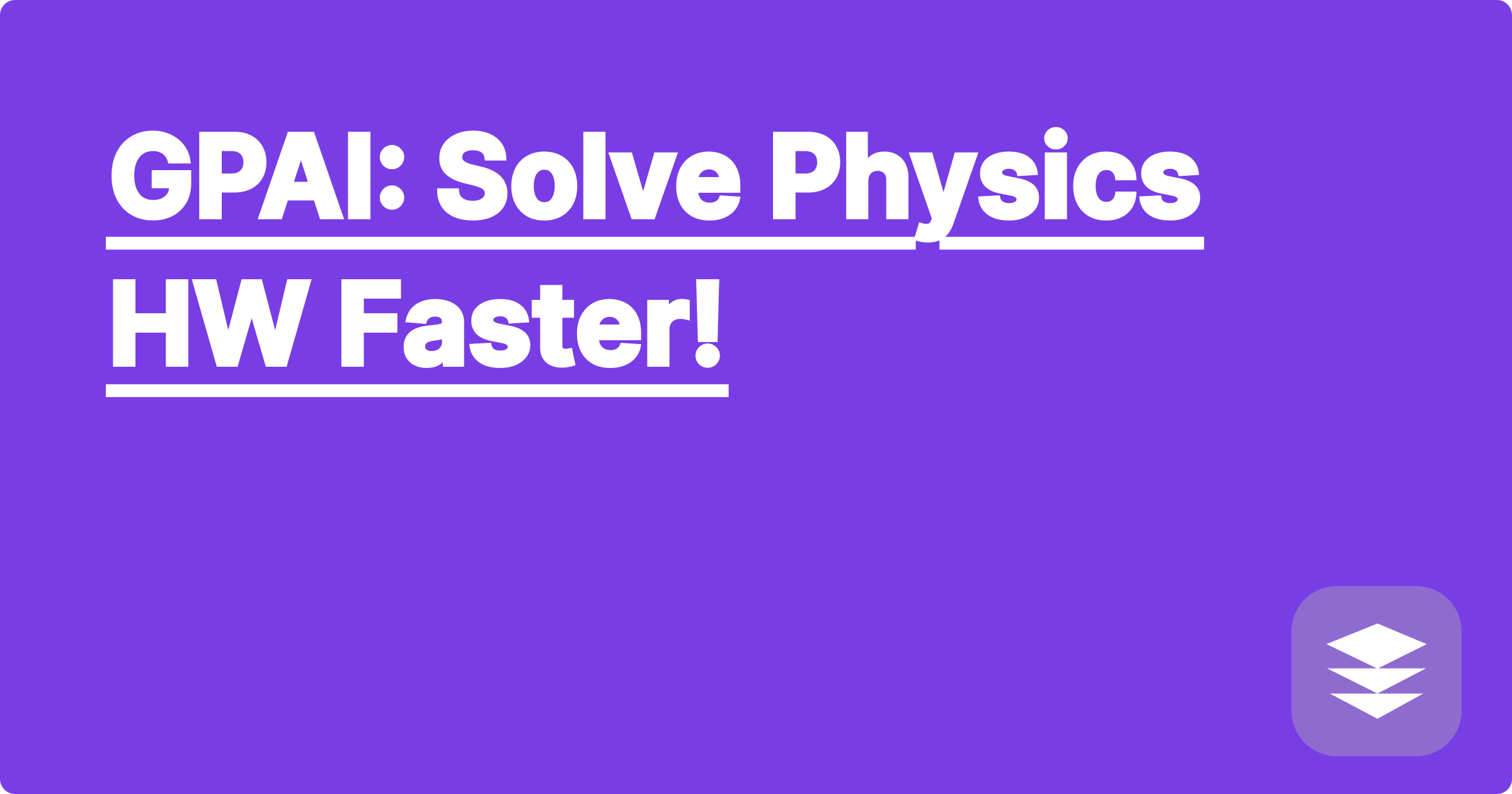
The rigorous demands of STEM education, particularly in physics, often leave students grappling with complex problem sets that consume significant time and energy. Balancing demanding coursework with research, extracurricular activities, and personal life can be a constant struggle. Artificial intelligence (AI) offers a powerful new toolkit to navigate these challenges, providing opportunities to streamline the learning process and accelerate problem-solving. AI can act as a personalized tutor, offering step-by-step guidance, verifying solutions, and even generating alternative approaches to tackling intricate physics problems.
For STEM students and researchers, mastering physics is not just about achieving good grades; it's about developing a deep understanding of the fundamental principles that govern the universe. This understanding is crucial for innovation and advancement in fields ranging from aerospace engineering to quantum computing. AI can be a powerful ally in this journey, helping students grasp complex concepts more quickly and efficiently, freeing up valuable time for deeper exploration and research. By leveraging AI tools effectively, students can transform their approach to learning, moving from rote memorization to a more intuitive and comprehensive understanding of the subject matter.
Physics homework often presents a unique set of challenges. Problems can range from simple calculations involving basic formulas to complex scenarios requiring multi-step derivations and a thorough understanding of underlying physical principles. Students often struggle with translating word problems into mathematical equations, selecting the appropriate formulas, and executing the calculations correctly. Furthermore, visualizing abstract concepts and understanding the physical implications of the solutions can be difficult. Traditional learning resources, such as textbooks and lectures, may not always provide the personalized support and immediate feedback that students need to overcome these obstacles.
AI-powered tools like ChatGPT, Claude, and Wolfram Alpha offer a transformative approach to solving physics homework. These tools can assist with various aspects of the problem-solving process, from understanding the problem statement to verifying the final answer. ChatGPT and Claude, for example, can be used to break down complex problems into smaller, more manageable steps, explain the underlying concepts, and even provide hints or alternative solution strategies. Wolfram Alpha excels at performing symbolic calculations, solving equations, and generating visualizations, which can be invaluable for understanding the physical implications of a problem.
Begin by clearly defining the problem you want to solve. This involves carefully reading the problem statement, identifying the given information, and determining what needs to be calculated. Next, choose an appropriate AI tool based on the nature of the problem. For conceptual questions or problems requiring step-by-step guidance, ChatGPT or Claude might be the best choice. For problems involving complex calculations or symbolic manipulations, Wolfram Alpha is often more suitable. Input the problem statement into the chosen AI tool, ensuring that all relevant information is included. If necessary, provide additional context or specify the desired output format. Carefully review the AI-generated solution, paying attention to the reasoning and the steps involved. Don't simply accept the answer without understanding how it was derived. Finally, verify the solution using alternative methods, such as checking units, comparing with similar examples, or consulting with a textbook or instructor.
Consider a classic physics problem: calculating the trajectory of a projectile launched at a specific angle and velocity. You could input the following prompt into Wolfram Alpha: "projectile motion, initial velocity = 20 m/s, angle = 30 degrees". Wolfram Alpha will then generate a comprehensive output, including the projectile's trajectory, maximum height, range, and time of flight. It will also provide the relevant equations and allow you to explore the impact of changing the initial conditions. Alternatively, if you're struggling with a concept like conservation of energy, you could ask ChatGPT: "Explain the principle of conservation of energy with an example." ChatGPT will provide a detailed explanation of the concept, along with an illustrative example, such as a simple pendulum or a roller coaster.
For a more complex example, consider solving a circuit problem involving resistors and capacitors. You could input the circuit diagram and the values of the components into Wolfram Alpha, which can then calculate the current, voltage, and power across each element. It can also analyze the circuit's behavior in different frequency regimes. Alternatively, you could use ChatGPT to guide you through the process of applying Kirchhoff's laws to solve the circuit step by step.
Integrating AI tools into your learning workflow requires a strategic approach. Don't rely solely on AI to solve problems without understanding the underlying concepts. Instead, use AI as a supplement to your learning, not a replacement for it. Actively engage with the AI-generated solutions, questioning the steps and seeking clarification when needed. Experiment with different AI tools and find the ones that best suit your learning style and the specific challenges you face. Remember that AI is a powerful tool, but it's most effective when used in conjunction with traditional learning methods.
Concluding, AI offers transformative potential for STEM students and researchers, particularly in tackling challenging physics problems. By leveraging AI tools like ChatGPT, Claude, and Wolfram Alpha strategically, students can enhance their understanding of complex concepts, improve their problem-solving skills, and free up valuable time for deeper exploration and research. Embrace the power of AI, but always remember that true learning comes from active engagement and a deep understanding of the underlying principles. Start exploring these tools today and discover how they can revolutionize your approach to physics and other STEM subjects. Don't hesitate to experiment and find the best ways to integrate AI into your learning workflow. The future of STEM education is here, and AI is a key part of it.
GPAI: Solve Physics HW Faster!
GPAI: Engineering Data Analysis